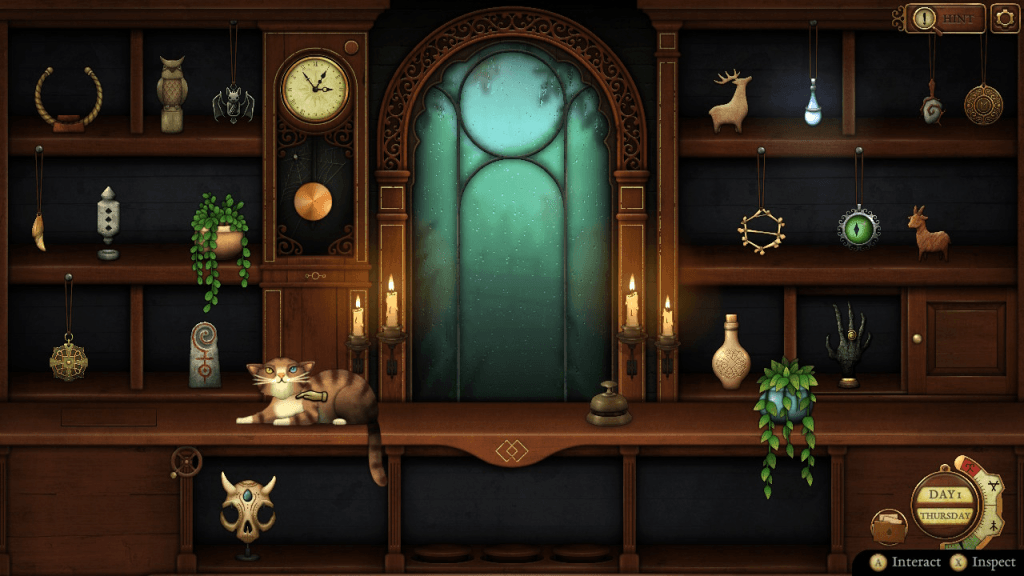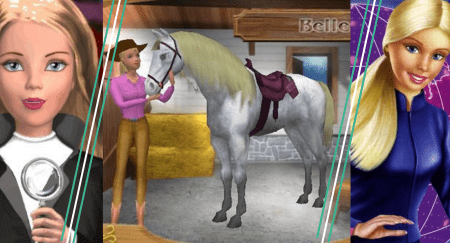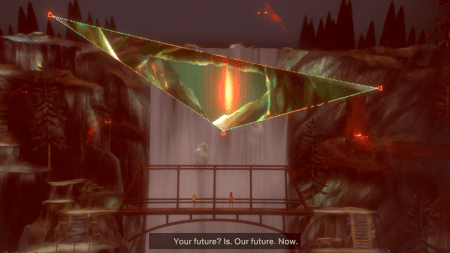Those looking for a spooky but not scary game this Halloween season should look no further than Strange Antiquities, developer Bad Viking’s sequel to 2022’s Strange Horticulture. This rich, vibe-heavy indie game is perfect for lovers of reading and thought-provoking challenges.
Make no mistake: This is not your average visual novel. Strange Antiquities features a variety of puzzles, riddles, and opportunities for exploration. What’s more, your actions selling magical goods in the town of Undermere have consequences — you could curse someone’s ex-friend, help a cult leader assert power, empower a customer through their fears (or not), and even kill your boss, though that last one might be by accident.
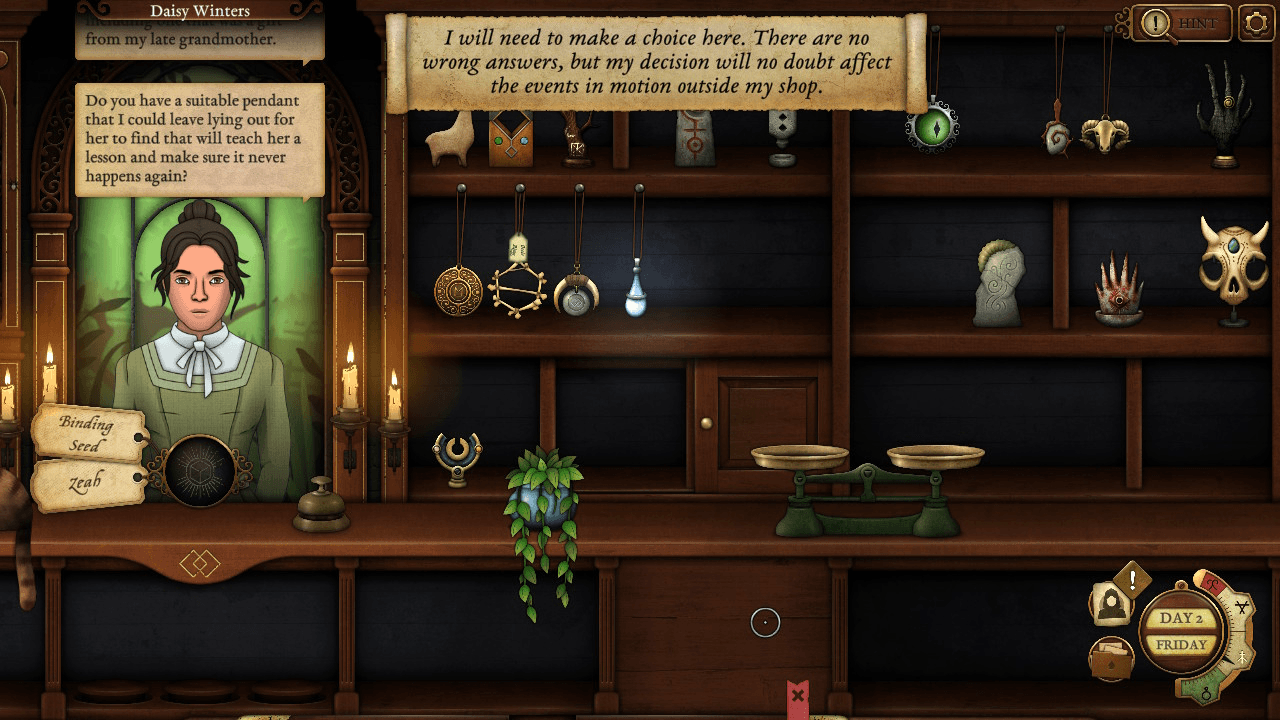
Come In, We’re Open!
Strange Antiquities is most successful when it luxuriates in the mood it has set. Rain, drizzling miserably outside. A cat named Jupiter with two different colored eyes, purring. Peculiar devices that change colors or emit the sound of hissing snakes. Book pages turning slowly, vellum against parchment. Eerie but not altogether unpleasant music. The detailed visuals and complex soundscapes welcome players in, just as customers enter the titular shop.
Similar to Strange Horticulture, you play as a new shop assistant who is still learning the ropes, much less the inventory. To make matters worse, a strange curse descends upon the town and your boss has to go investigate, abruptly leaving you in charge. Unfortunately, the store owner conveniently forgot to label anything in the shop, and all you have to assist you is a vague book with missing pages. Therein lies the central challenge of the game.
Each day in Strange Antiquities offers a satisfying gameplay loop that is similar to Bad Viking’s last game. Customers enter, making requests. You try your best to make the right match, and if you fail too many times, you have to gain your confidence back by doing a fun little dice game that wards off the darkness (or something).
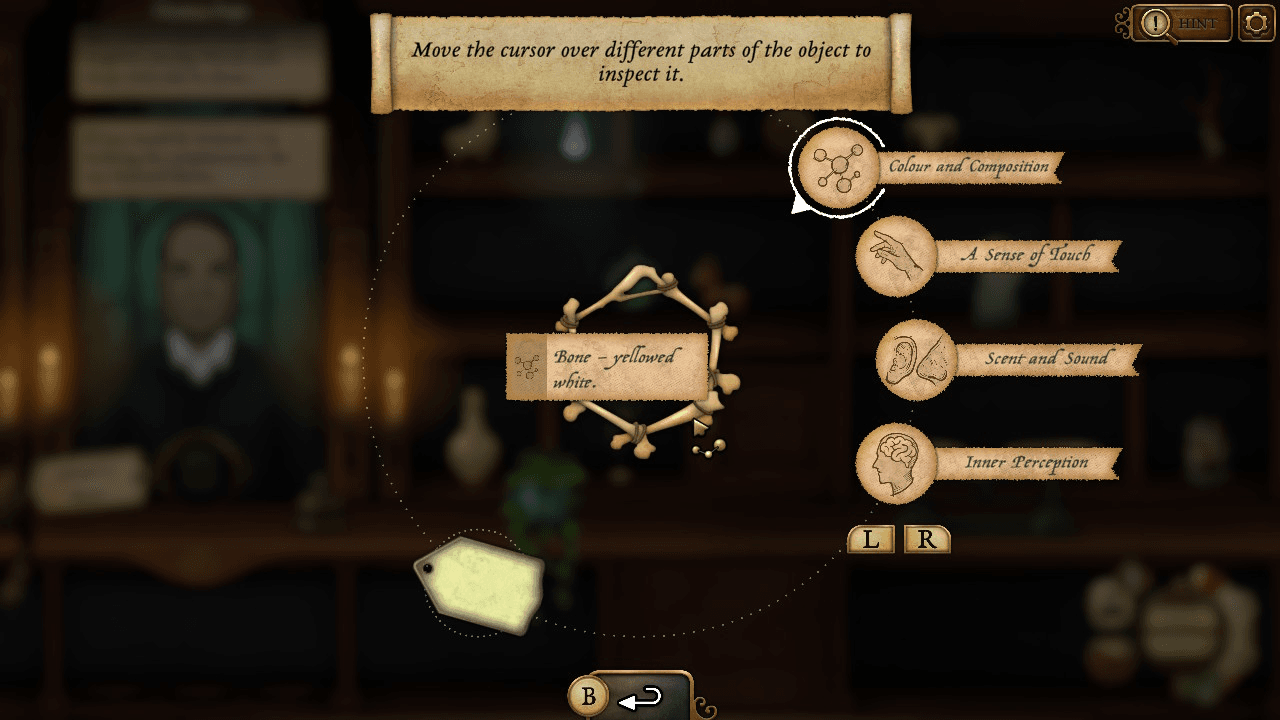
Some customers know exactly what they want, and it’s your duty to figure out which unlabeled oddity fits the bill. Other times, you get a bit more freedom, flipping through books and comparing remedies to determine what’s best. Would a Selenic Totem or a Grey’s Grace be better for a worried, lonely woman? And that one-eyed man is asking for a peculiar wooden relic — but which one is it?! In both Strange Antiquities and its predecessor, I loved the satisfaction that came with finding just the right thing.
Once sales are done, you have time to explore outside of the store. These adventures are fueled by two returning systems from Strange Horticulture: first, getting letters from townspeople, and second, dreaming a vision in the night and receiving a riddle that, when solved, reveals a new item.
Strange Antiquities largely raises the bar from the first game. There are three different maps available to unlock, versus just one. The shop itself has multiple nooks and crannies that require clever puzzle-solving skills to open. These additional side quests and locations breathe a lot of life into days at the shop, even as doom and gloom increase as the game goes on.
Unfortunately, not all is well in Undermere — or in the game itself.
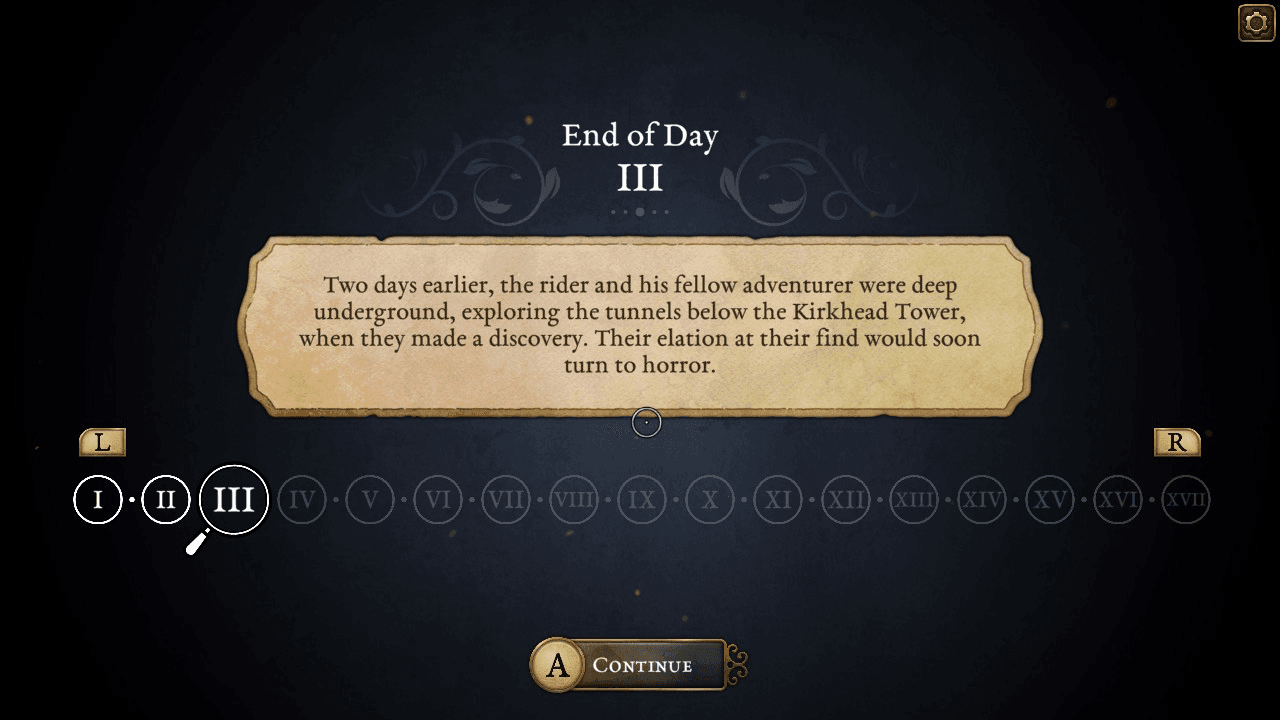
Monsters in the Closet
Strange Antiquities is notably more complex than its predecessor. I was initially delighted to witness how much more there is here, and equally impressed by Bad Viking’s growth as developers.
However, I soon got tired of cross-checking four different books and weighing items and looking at them with candles just to figure out if it was THIS weird little stone thing that a customer was looking for or if it was THAT almost identical little stone thing. About half the time, I was able to figure it out on my own, feeling like a cool magic librarian. But many times, I resorted to using in-game hints or reviewing very helpful guides made by other players. When I did, I was frequently disappointed to realize that I was way off with my initial guesses. Given that the main point of the game is to figure out which item is which, the fact that I often couldn’t get on the same wavelength as the game’s internal logic was frustrating.
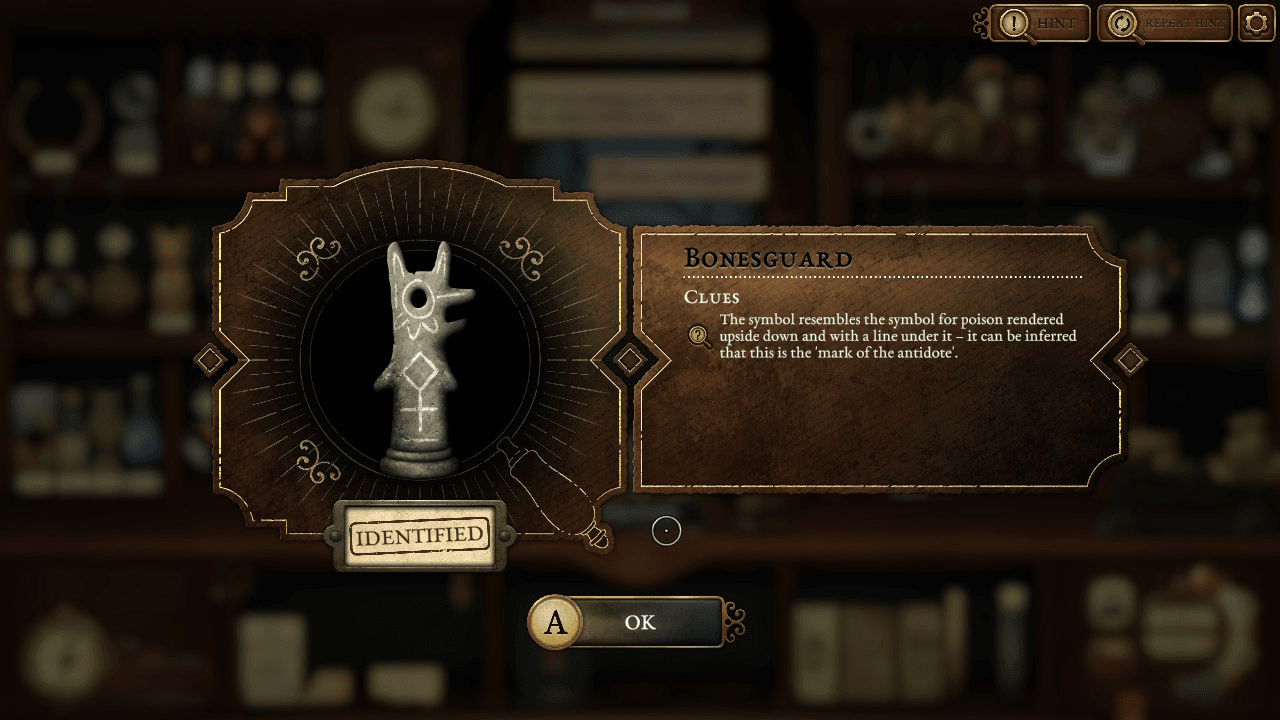
I was often overwhelmed not just because of the sheer number of unknown items I had at any given moment, but also by the sheer amount of characteristics and reference materials you can investigate. In Strange Horticulture, everything was a plant, so you were (with relative ease) simply comparing leaf shapes, flowers, or maybe smells. Here, the items vary significantly, from simple bronze pendants to withered flesh hands to bejeweled skulls. There are several books you’ll have to check, including one filled with strange symbols that are sometimes easy to mix up. Items often require much more sensory analysis than in the previous game. And if all that wasn’t enough, you also discover a magical field emitter that can check wavelengths, adding yet another type of analysis that I didn’t think I ever fully mastered.
This is a LOT to check for any item, especially when there’s as much inventory here. My shelves were teeming with dozens of funky little objects. It’s not unusual to get several new items in one day, and if you only sell a few, you’ll have even more mysterious merchandise than you woke up with. At first, I found organizing my shelves to be charming, but I eventually got so exasperated that I spent 10 minutes alphabetizing, which wasn’t exactly fun, but needs must.
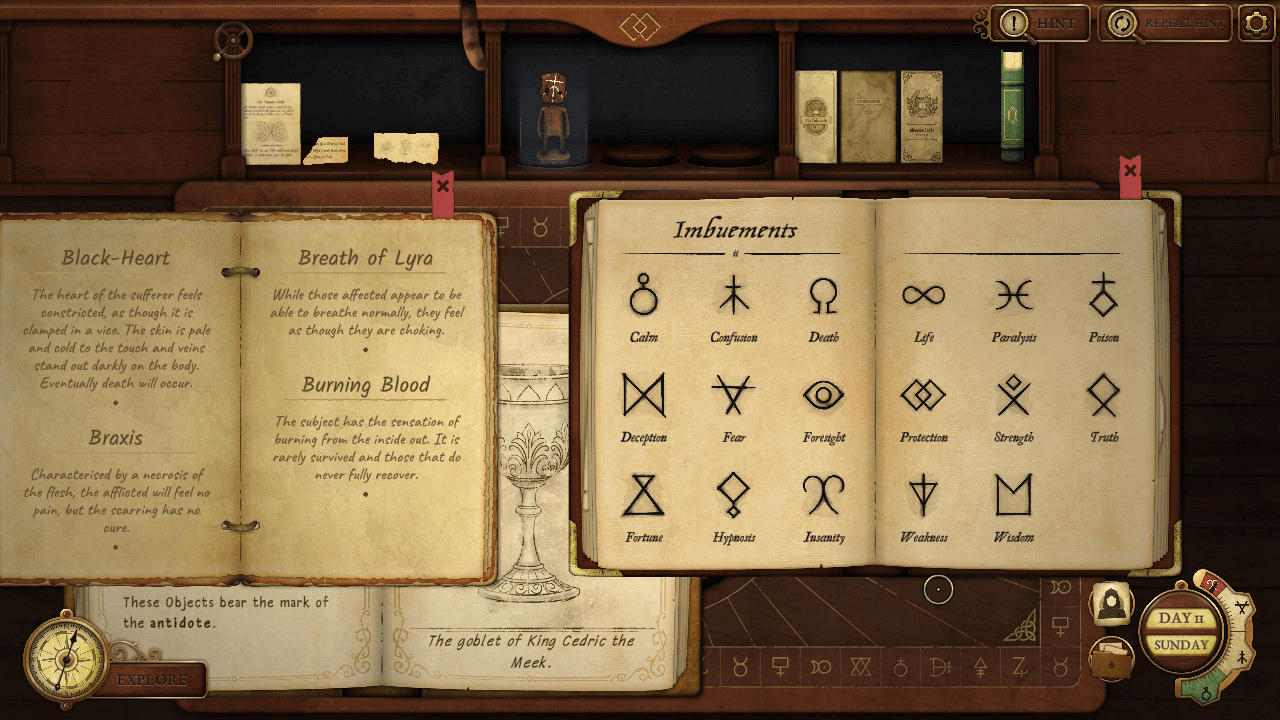
Strange Antiquities is a crowded game. The sequel cleverly includes a built-in magnifying glass, which the first game sorely needed (there’s A LOT of tiny text). And yet, the shop is teeming with materials, usually to excess. I often had to move books around, shuffling pages just to see what I was trying to work on. I also had to organize paperwork — weird letters, torn book pages, maps, and so on — which felt ironic given I was actively avoiding organizing my real-life home office. As a result, the gameplay can sometimes feel like busywork.
In Strange Horticulture, I remembered more instances where customers simply described their symptoms, and I had to decide not only what plant they should get, but where it was in my shop (if I even had it!). In Strange Antiquities, most customers come in knowing the name of the item, which removes a lot of the mystery, turning the sequel into more of a matching game. Having a near-constant influx of new items meant that my playtime consisted mostly of trying to identify items, rather than diagnosing problems and coming up with the right item.
This dilemma was a sign to me that perhaps more is not always better in a sequel.
Something Wicked This Way Comes
Perhaps the nitty-gritty searching of items wouldn’t have bothered me if the story in Strange Antiquities hadn’t been so good! Some people’s eyes are turning black; they turn violent, driven by hallucinations. The vibes are off in Undermere, to say the least. And what do my neighbors need? Cool little protective necklaces! Your role as the town Thaumaturge (a word I’d never heard of before) means you’re in the center of the action.
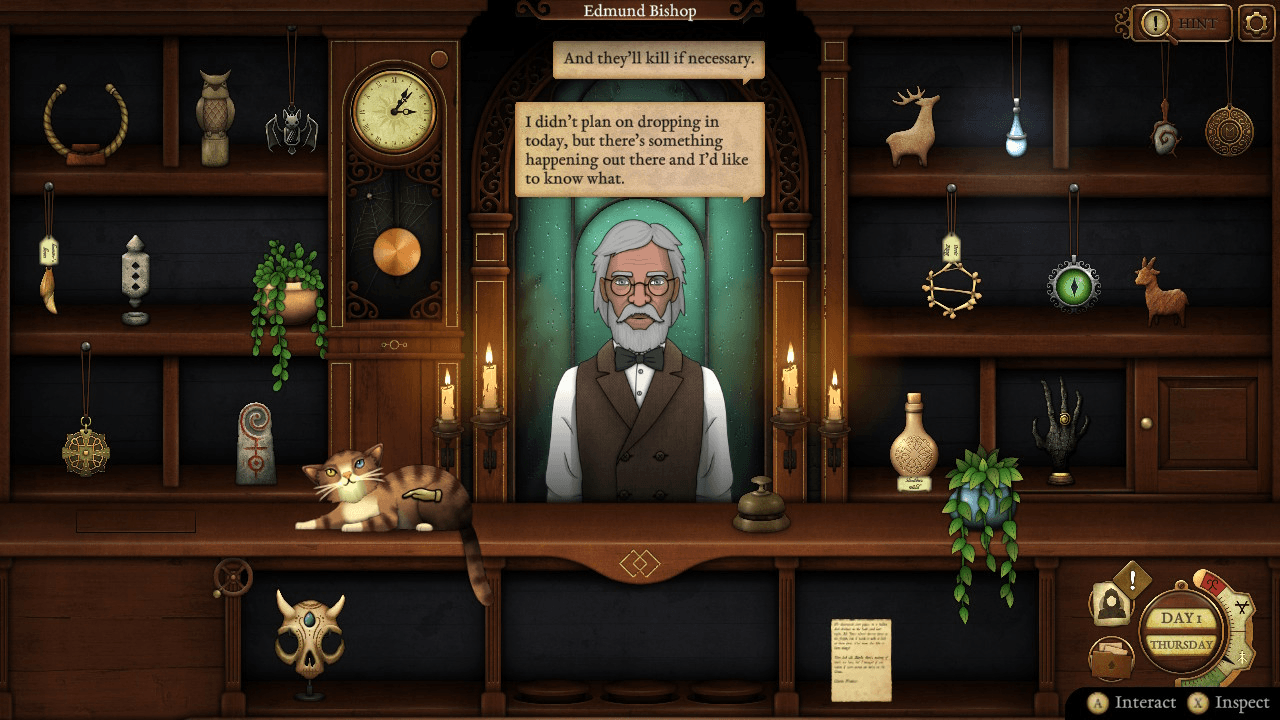
Each day brings a new chance to fight the curse, and only you and your encyclopedic knowledge of hermetic symbols and funky knick-knacks can possibly save anyone. The gameplay itself is low-key, but the stakes are high, providing a unique opportunity in the “cozy” genre.
I eagerly made my way through the game over the course of about 10 hours, wondering how my actions might affect the story’s ending. It was clear that many factions were at play, and what’s more, that not everyone might make it out alive.
The last in-game days of my playthrough were truly exciting. I exclaimed out loud, “Oh no!” when I accidentally put a hex on someone. I breathed a sigh of relief when I remembered that, through my free time of exploring the catacombs and grave robbing for treasures, I had discovered something to heal them.
When my boss returned, urging me to meet him at a mysterious location for the final conflict, I took a deep breath. Those last moments, even though I was simply reading, were harrowing! It wasn’t just the town at stake, but really a fight for good versus evil — and which side would I join?
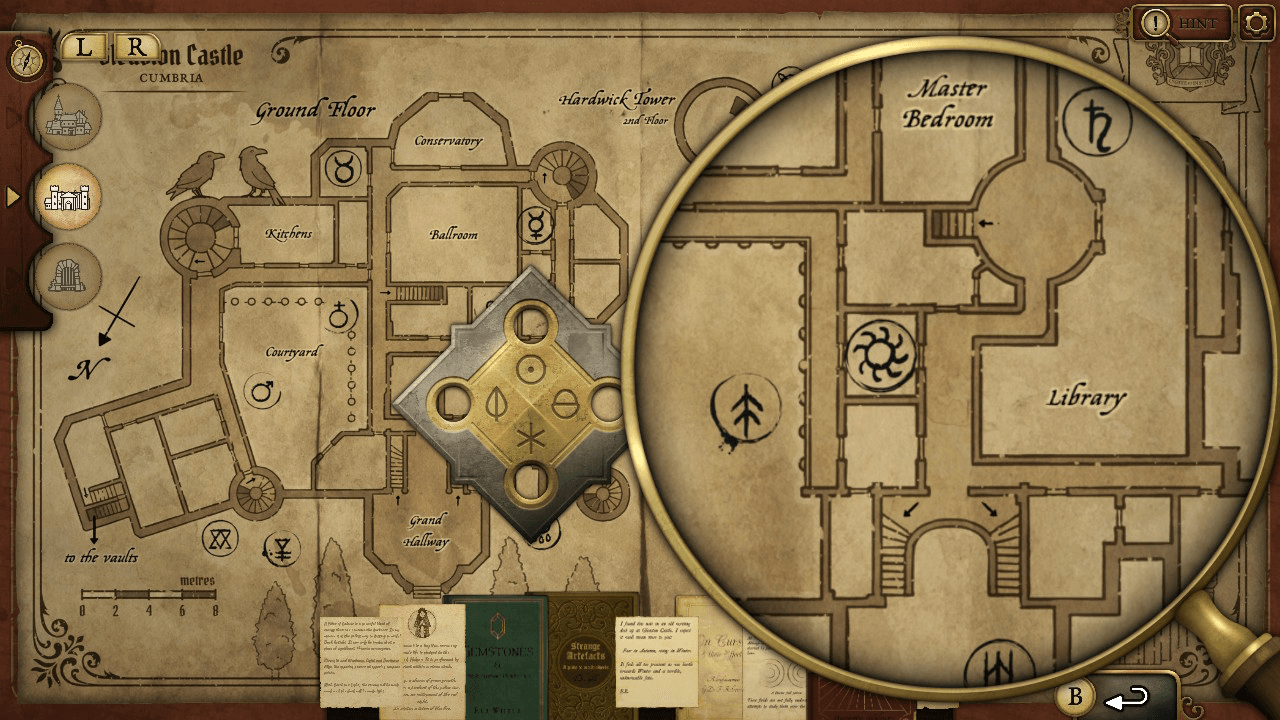
As the credits rolled, I was told I had received Ending 7 and was rewarded with a cascade of my customers’ portraits and a brief summary of their fates. I was impressed by the level of impact Bad Viking allowed players to have on Undermere’s townspeople. In my playthrough, I saved many, though a few precious to me were dead, two lost their minds, and another vanished.
The epilogue, in which customers came in with requests to round out all of my leftover items, made me sure I was about to unlock a new game plus mode, which would allow me to start the game over with not only all of my items, but everything correctly identified. I was eager to play again and discover more endings. Instead, my epilogue day ended abruptly and returned me to the start screen.
I found it baffling that there’s no new game plus option in Strange Antiquities when it seems the developers have put in so much immense care into building several different endings. Unfortunately, the game’s replayability is deeply harmed by its own laurels; it is so dense, so full of stuff and tasks, so packed with locations to visit, that I can’t imagine replaying the whole thing again just to read the equivalent of a few pages of text. I wonder if it’s that making a new game+ mode would be too difficult to implement, or that the creators didn’t think of it or just plain didn’t want to. No matter why, its absence was noted.
Strange Antiquities is still very much worth playing without a new game+ mode, but I think it could’ve been even richer with one. I had the most fun with Strange Antiquities when a customer came in with a problem but didn’t know the solution was; it enabled me to really scour my inventory as a consulting Thaumaturge. Thus, I would’ve loved to replay a version of the game where I had my full stock and all of my items were labeled (perhaps even organized in my system!), and customers came in not knowing the names of anything. Perhaps we’ll get lucky with a future update, and I can return to my little shop.
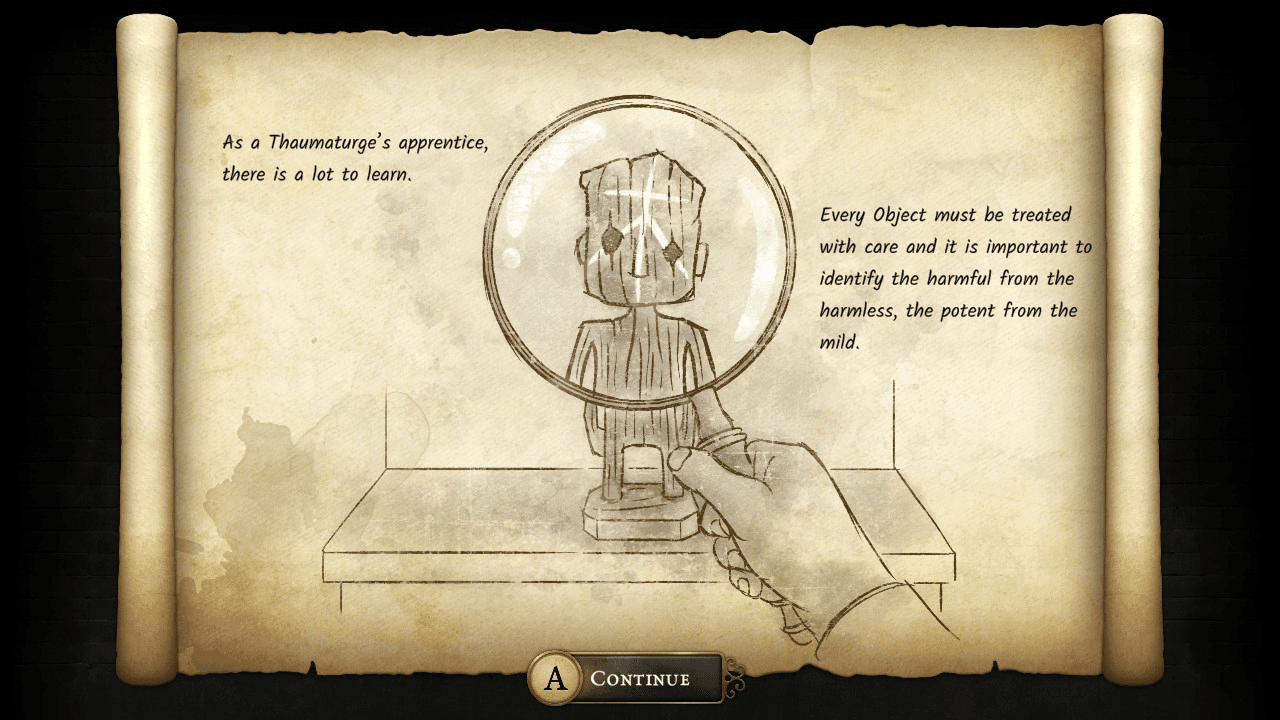
Final Thoughts
Strange Antiquities is a commendable sequel and also a great standalone game for anyone who wants a quiet but compelling title. Most “quiet” games are cutesy cozy, and so Strange Antiquities fits a very unique niche of being low-key while still interesting and spooky. All that said, the lack of a new game+ mode is a disappointment given the rich and compelling storytelling.
The setting is delightful, and makes me wonder if we’ll be so lucky as to return to Undermere for a third time — but for the residents’ sake, I almost hope we don’t! I’m not sure this poor town can handle yet another curse.
Score: 8.5/10
Strange Antiquities, developed by Bad Viking and published by Iceberg Interactive, released on September 17, 2025, for PC and Nintendo Switch 1 & 2. MSRP: $17.99. Version review: Nintendo Switch 1.
Disclaimer: A review code was provided by the publisher.
Amanda Tien (she/her or they) loves video games where she can pet dogs, punch bad guys, make friends, and have a good cry. She started writing for the site in 2020, and became an editor in 2022. She enjoys writing about mystery games, indies, and strong femme protagonists.
Her work has also been published in Unwinnable Monthly (click here to read her cover feature on Nancy Drew games), Salt Hill Journal, Poets.org, Litro Magazine, Public Books, and more. She was the Co-Founder and Editor-in-Chief of Columbia University's Culinarian Magazine, and served for two years as the Managing Editor of Aster(ix) Literary Journal.
She recently graduated with a MFA (Master of Fine Arts) in Creative Writing from the University of Pittsburgh. Her writing, art, graphic design, and marketing work can be viewed at www.amandatien.com.
She does not post a lot on social, but you can find her on X and on Instagram.


